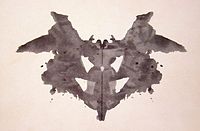
Photo from wikipedia
Abstract In classical three-flat test, error in reference surface can not be identified fully. What we obtain is only the absolute radial profile instead. In addition, at least three flats… Click to show full abstract
Abstract In classical three-flat test, error in reference surface can not be identified fully. What we obtain is only the absolute radial profile instead. In addition, at least three flats with similarly high accuracy are required. The test procedures are very complex and it takes a long time and requires high precision adjustment. In this paper, we proposed a new method for absolute test of flatness. There are only two flats used in our method and it does not need precise alignment of the specimens. The method requires multiple translations of the test surface and one 90° rotation step. The relative tilt during translation is measured by a compact wavefront interferometer. We analyze the effect of noise, tilt estimation error and rotation error on reconstruction result. The method is experimentally verified and compared with the direct interferometric result using high precision reference surface.
Journal Title: Optics and Lasers in Engineering
Year Published: 2019
Link to full text (if available)
Share on Social Media: Sign Up to like & get
recommendations!